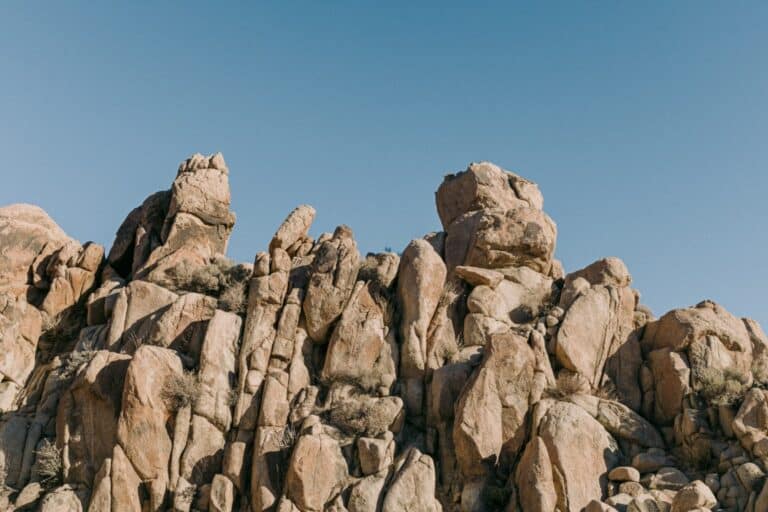If you like picture perfect desert trails, boulder leaping, and treks to scenic overlooks, then Joshua Tree National Park is calling for your next getaway.
This fabled park is a bucket list hiking destination for countless adventurers and casual explorers due to its unique geological features and the iconic, twisted Joshua trees that give the park its name. A combination of otherworldly scenery and peaceful solitude makes the approximately 132 hiking trails in Joshua Tree some of the best in the nation.
While there are plenty of great things to do in Joshua Tree, getting out on the trails is certainly one of the best.
When staying at a Fieldtrip vacation rental, you should definitely add one of these iconic hikes to your itinerary. Grab your walking stick, and let’s hit the trails!
Best Easy Hikes in Joshua Tree
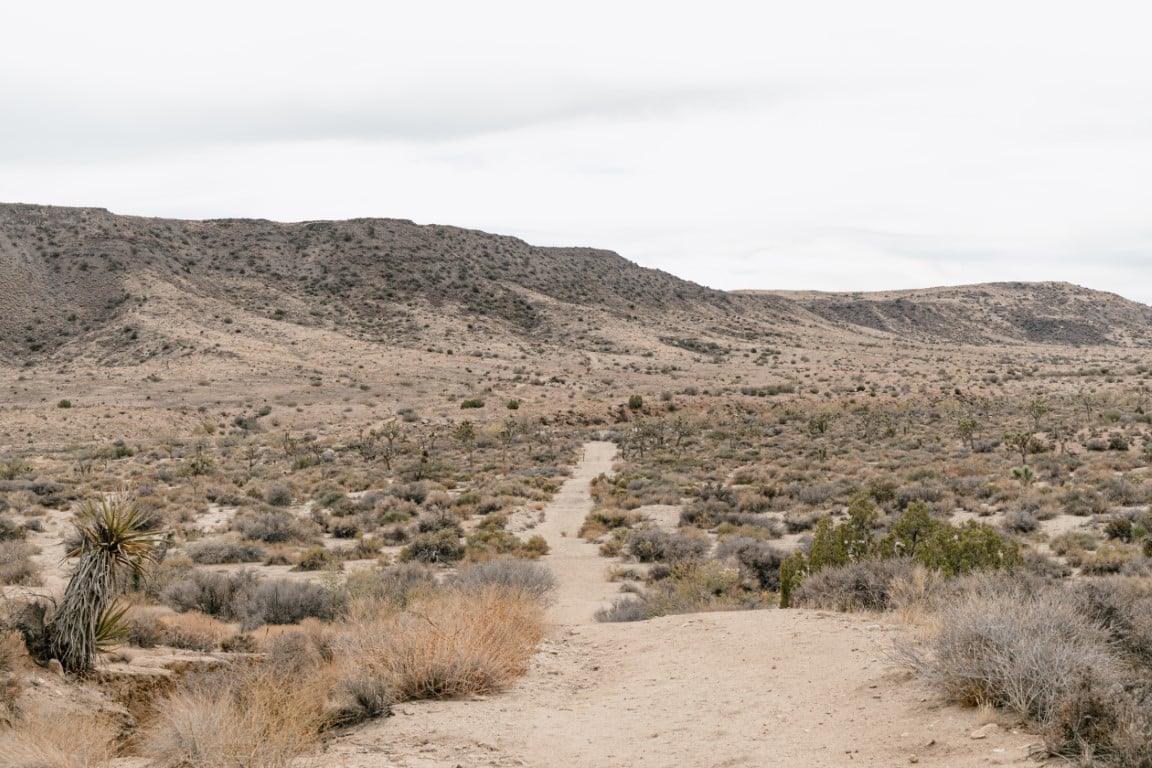
Barker Dam Trail
- Best for: Discovering water in the desert
- Distance: 1.3 miles loop
- Trail Map: alltrails.com/trail/us/california/barker-dam
If you’re staying in one of our Twentynine Palms vacation home rentals, you’ll be just a short drive away from one of Joshua Tree National Park’s favorite hikes near the north entrance—The Barker Dam Trail. If you never thought you’d find water in the desert, this trail proves that mirages can be real when you see this man made oasis.
The oasis is actually a natural dam constructed with large boulders set by cattlemen in the 1900s – but no less alluring. More than 100 years later, it remains a water source for bighorn sheep and other park wildlife.
Pro Tip: Look out for petroglyphs along this trail.
Skull Rock Trail
- Best for: Seeing unique rock formations
- Distance: 1.7 miles loop
- Trail Map: alltrails.com/trail/us/california/skull-rock-nature-trail
Is Skull Rock just another desert mirage? Nature has worked its magic on this massive boulder that looks like something out of a comic boneyard – and it’s not the only interesting rock you’ll find on the Skull Rock Trail!
Skull Rock is visible right from the road, just a few paces from the parking lot to get a close-up look. The complete hike is a loop showcasing huge piles of boulders stacked together by weather and erosion.
Pro Tip: Check out Face Rock via the Split Rock Trail for another quirky rock formation.
Hidden Valley Nature Trail
- Best for: A family-friendly hike
- Distance: 1-mile loop
- Trail Map: alltrails.com/trail/us/california/hidden-valley
Here’s a hike that even the kids will enjoy! Walk the footpaths of desert outlaws who used this small valley to hide stolen cattle. The tall rock walls surrounding it were used to keep cattle in and provided enough elevation to keep an eye out on them—and anyone approaching to recover their stolen steers.
This trail features an information display for more details about its history. When you arrive inside, explore some of the footpaths to interesting boulder formations and climb rock stairs to panoramic views.
Pro Tip: Stop by the Hidden Valley Picnic Area afterward to eat a post-hike snack.
Cholla Cactus Garden Nature Trail
- Best for: A short sampler hike
- Distance: 0.2-mile loop
- Trail Map: alltrails.com/trail/us/california/cholla-cactus-garden
Looking for a short hike to fit into your schedule? The trail to Cholla Cactus Garden is a great way to catch your breath between hikes. It’s a short path with no elevation gain to reach the garden.
As tempting as it is, don’t touch the cholla cacti! They’re scattered all over this desert garden, with prickly needles nearly leaping off the plant onto your skin and clothes. We recommend staying on the path and simply admiring the sights of these barbed beauties.
Arch Rock Trail
- Best for: Nature photography
- Distance: 1.2-mile out and back
- Trail Map: alltrails.com/trail/us/california/arch-rock-trail
Park at the Arch Rock Trailhead and bring your camera for the short hike to one of the best photo opportunities in Joshua Tree National Park. This naturally-formed Arch Rock expands 30 feet long and looks stunning in any photo.
Pose beneath the arch or stand on top to show you’ve conquered one of the best hikes in Joshua Tree. Sunset is a popular time, so you may have to wait for a turn to take the perfect shot. A night hike here is also a great time for pictures looking through the arch at the star-filled night sky.
Pro Tip: Don’t miss nearby Heart Rock for a great photo op!
Indian Cove Nature Trail
- Best for: Viewing desert flora
- Distance: 0.6-mile loop trail
- Trail Map: alltrails.com/trail/us/california/indian-cove-nature-trail
Contrary to what you typically think of as a desert, there’s actually tons of plant life here—hence the name Joshua Tree! Desert dwellers of the past and wildlife use this verdant cove to sustain life.
Indian Cove is one of the most biodiverse parts of the Mojave Desert. This well-marked trail features displays for learning about desert botany. Tiny trail-side shrubs like Jojoba and Desert Almond plants were popular for nuts. Hike this trail during the spring to see pencil cholla cacti blooming with tiny pink flowers.
Black Rock Canyon Trail
- Best for: Spotting wildlife
- Distance: 3.5-mile out and back
- Trail Map: alltrails.com/trail/us/california/black-rock-canyon-trail
Black Rock Canyon is a popular Joshua Tree hiking spot to encounter some of the desert’s most exciting wildlife creatures. Even the local visitor center is used as a nature center!
Navigate these hills to find common animals like jackrabbits, roadrunners, and great horned owls. If you’re lucky, you might spot a mountain lion, coyote, or desert tortoise.
Cottonwood Spring Oasis
- Best for: Hidden gem hike
- Distance: 0.1-mile out and back
- Trail Map: alltrails.com/trail/us/california/cottonwood-spring
Discover an area once inhabited by the Cahuilla Native Americans and now holds some of the park’s most serene vistas. Avoid the crowds and take a short hike through this scenic desert oasis.
Hike the area to see the site of the abandoned Mastodon Mine, which produced gold during the 1930s. Stand next to towering groves of desert fan palms. If you’re lucky, you might encounter artifacts like pottery and tools used by the former desert-dwelling inhabitants.
Keys View
- Best for: Panoramic views
- Distance: 0.1-mile loop
- Trail Map: alltrails.com/trail/us/california/keys-view
The best panoramic view in Joshua Tree National Park is also the most accessible trail. The paved path is more like a walk that even wheelchairs can access.
You can pick out tons of natural landmarks from atop Keys View—although it’s notorious for having lots of haze in the valley below. If you catch it on a clear day, you can see the San Andreas Fault, Coachella Valley, Mount San Jacinto, Santa Rosa Mountains, and Palm Springs.
Best Moderate Hikes in Joshua Tree
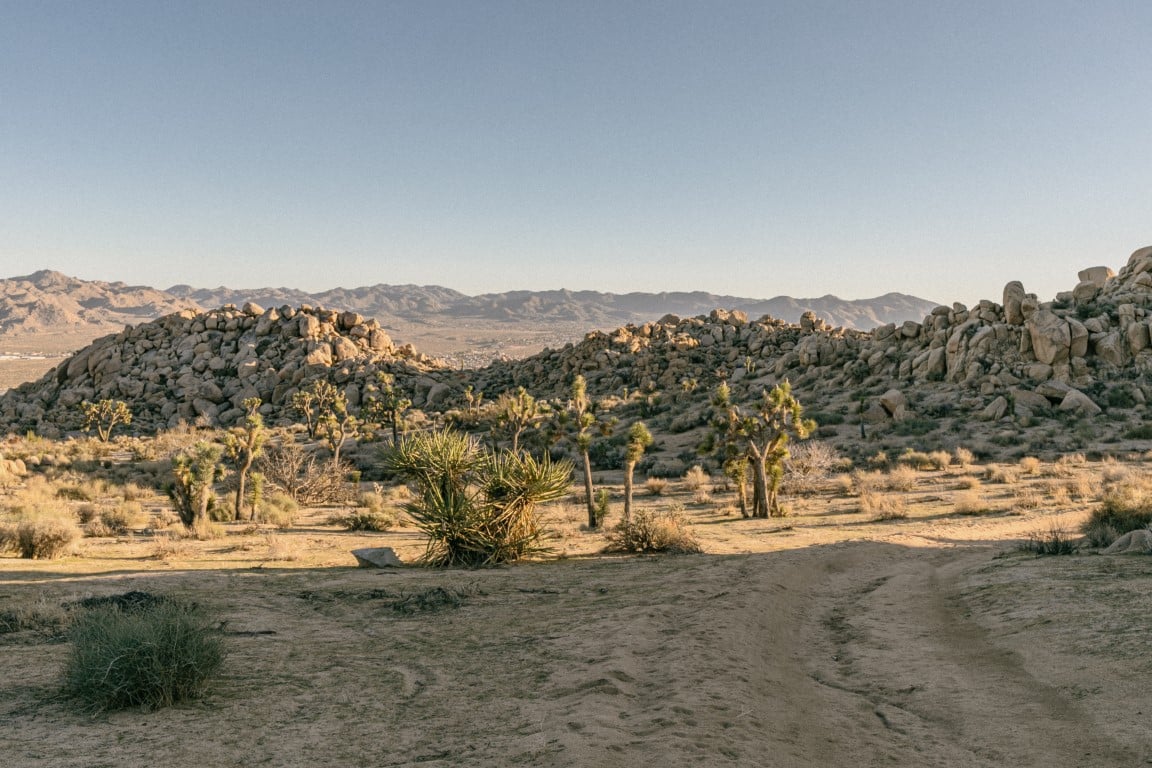
Split Rock Loop Trail
- Best for: Diverse landscapes
- Distance: 2.4-mile loop
- Trail Map: alltrails.com/trail/us/california/split-rock-loop
Keep your eyes peeled because there are tons to see on the Split Rock Loop Trail. It’s one of the best hikes in Joshua Tree, showcasing the different desert terrains and seeing Joshua and Yucca trees.
Hike on rocky grounds, navigate past desert washes, climb through a boulder field, trek through canyons with towering cliffs, and cool off beneath the shade of Pinyon pine groves.
Lost Horse Mine Trail
- Best for: Regional history
- Distance: 6.4 mile loop
- Trail Map: alltrails.com/trail/us/california/lost-horse-loop
Did you know that Lost Horse Valley was named while searching for an actual lost horse? And that’s hardly even the most exciting history lesson about this part of the park.
The Lost Horse Mine Trail takes you on a route more than 100 years old that was used to transport ore mined at the site. It’s the most successful of all the Joshua Tree Mines, producing millions of dollars of gold. And old mining chimneys and desert-worn machinery are still on site.
Go clockwise on this route to get to the mine first—but keep in mind this is the hardest part of the trail.
Boy Scout Trail
- Best for: Full-day hike
- Distance: 8-mile point to point
- Trail Map: alltrails.com/trail/us/california/boy-scout-trail
The Boy Scout Trail is a strenuous hike, but the long distance requires some endurance—especially in the heat. You won’t find much shade on this trek. We recommend starting in the early morning and bringing plenty of water to stay hydrated.
Gear up for backpacking an eight-mile hike through the open Mojave Desert. You’ll see many of the park’s popular features, like Joshua Trees, unreal rock piles, and a scenic viewpoint midway through the hike.
Pro Tip: If you’re up for it, fit the entire trail into one day or opt for a shorter route along the trail.
Fortynine Palms Oasis Trail
- Best for: Classic desert scenery
- Distance: 3.1-mile out and back
- Trail Map: alltrails.com/trail/us/california/fortynine-palms-oasis-trail
Seeing so much plant life can make you forget you’re at the intersection of the Mojave and Colorado Deserts. However, an excursion along the Fortynine Palms Oasis Trail will quickly remind you where you are. It’s one of the best hikes in Joshua Tree National Park to truly feel like you’re in a desert.
Joshua Tree National Park gets hot—we’re talking 100°F and hotter kind of hot! This desert oasis is one of the driest parts, with rocky terrain, slate-colored rocks, and thirsty paths. The trail goes over a mountain and down into a canyon, so prepare for an elevation change.
This route is closed during the summer so bighorn sheep can access local water sources due to droughts in the area.
Challenging Hikes in Joshua Tree National Park
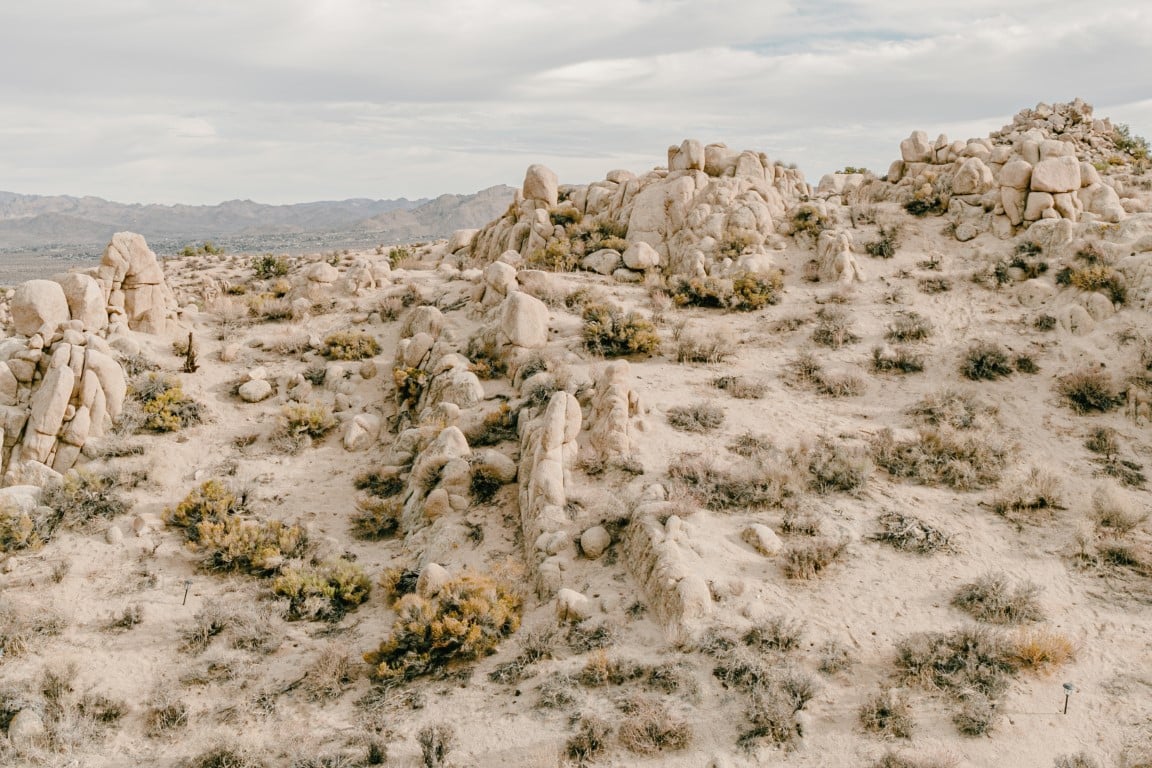
Ryan Mountain
- Best for: A sunrise hike
- Distance: 2.9-mile out and back
- Trail Map: alltrails.com/trail/us/california/ryan-mountain-trail
If you’re staying near Joshua Tree National Park, you’ll have the chance to catch one of the most stunning Southern California desert sunrises at Ryan Mountain. Sunrise happens between 6 am and 7 am, so plan to do this hike early in the morning to reach the summit.
It’s a race against time as you hike to the top of this 5,456-foot mountain. Bring a light to help maneuver the route in the dark. At the top, you’re rewarded with the colorful morning sun shining over the entire Joshua Tree National Park.
Lost Palms Oasis
- Best for: Excellent navigators
- Distance: 7.4-mile out and back
- Trail Map: alltrails.com/trail/us/california/lost-palms-oasis
Up for a challenge? Put your navigation skills to the test on the Lost Palms Oasis. Your reward is one of the best desert oasis overlooks full of California Fan Palms that grow up to 60 feet tall.
They don’t call it ‘lost’ for nothing! Even with maps, you’ll find yourself maneuvering rock scrambles and uneven topography. Fingers crossed, you can stay oriented to reach the oasis because parts of the trail are not well marked.
Hall of Horrors Trail
- Best for: Rock climbing and bouldering
- Distance: 0.6-mile loop
- Trail Map: alltrails.com/trail/us/california/hall-of-horrors
Get ready to suck it in, duck down, and climb rocks. Joshua Tree is known for rock climbing, and this hike will give you plenty of practice.
This seemingly ordinary pile of boulders forms a slot canyon. To make it to the end, you’ll need to squeeze through enormous boulders, perfect the climb-and-duck maneuver, and use a bit of creativity for your feet and foot placement. An optical illusion makes it feel like the boulders overhead will fall. Don’t worry though; they’ve been secured in place!
Wonderland of Rocks
- Best for: Backcountry hiking
- Distance: 5.5-mile point to point
- Trail Map: alltrails.com/trail/us/california/wonderland-of-rocks-traverse
This wonderland is only wonderful for hikers skilled enough to navigate a maze of giant boulders. Rocks cover this backcountry area of the park, which makes it easy to get lost.
Calling all rock climbers! Rock climbing is required for this hike, so come equipped with the right gear. These large boulder stacks start to look alike after some time, so try not to get turned around.
Stay near Joshua Tree National Park
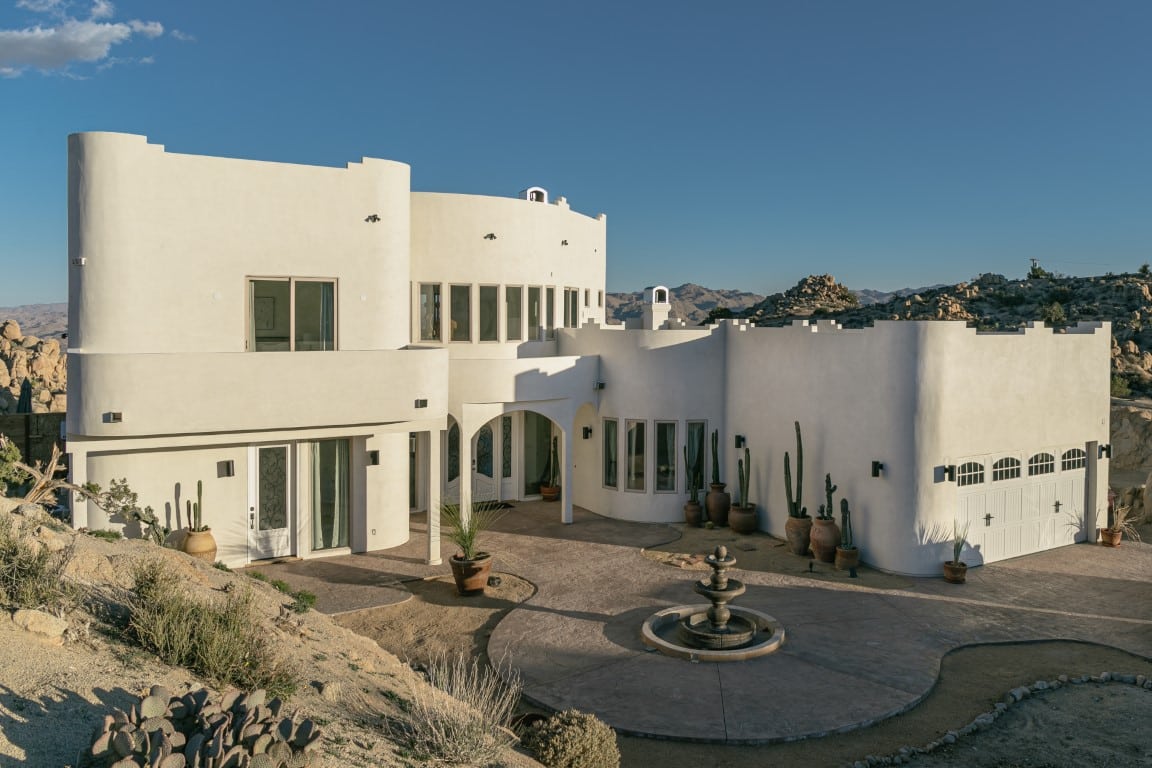
Find the perfect accommodations in Joshua Tree for your hiking adventures. Browse our collection of homes perfect for hikers attempting the best hikes in Joshua Tree.
Whether you’re looking for accommodations near the park entrance, in the nearby towns, or featuring hiker-friendly amenities like a hot tub (trust us, you’ll need it!), you’ll find the perfect place to call your home base.
